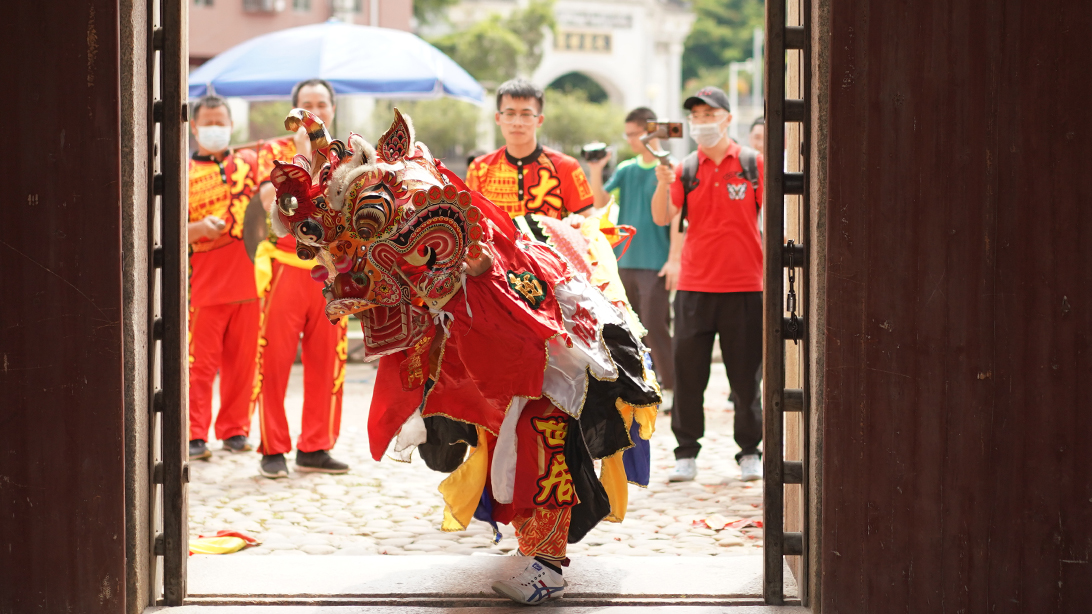City boasts 162 items of intangible cultural heritage
Writer: Zhang Yu | Editor: Holly Wang | From: Shenzhen Daily | Updated: 2020-08-14
This year marks the 40th anniversary of the Shenzhen Special Economic Zone. To mark the occasion, we are publishing a series of reports celebrating the city’s achievements in different aspects over the past four decades.

An actors perform the Hakka kirin dance at Dawan Residence in Pingshan District. Liu Xudong
Intangible cultural heritage represents the living legacy of humanity and is an important vehicle of cultural diversity. As a city of migrants, Shenzhen has been striving to make the local culture a widely diversified one while preserving its traditional and cultural heritage.
According to official statistics, so far, Shenzhen has 162 items of intangible cultural heritage, including seven at the State level, 28 at the provincial level, 24 at the municipal level and 103 at the district level.
The seven State-level intangible cultural legacies include the fish-lantern dance of Shatoujiao, Qixing lion dance of Songgang, Yongshengtang kirin dance of Bantian, kirin dance of Dachuankeng, traditional ancestor-worshipping ceremony of Xiasha, traditional orthopedic skills of the Guo family of Pingle, and Jia School’s acupressure therapy.
The city’s intangible cultural heritage has been given more exposure to the public over the years. At present, more than 20 intangible cultural heritage museums and exhibition halls have been built and set up in Shenzhen. A wide array of exhibitions and local folk activities are widely received by the public.
Shenzhen has also attached great importance to the research of intangible cultural heritage items, collating and editing the historical and cultural materials of local intangible cultural heritage.
More efforts will be made for the preservation of intangible cultural heritage in the near future, according to the city’s intangible cultural heritage preservation center.
The center will carry out in-depth investigations to understand the status quo of the city’s intangible cultural legacies.